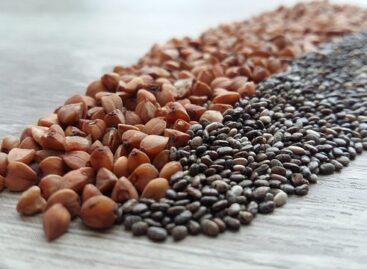Cereals returned from a six-month low on the stock exchange this week
The price of wheat increased, while that of corn and soybeans decreased.

Recently, the price of grain was at a six-month low on the stock exchange. (Photo: Pixabay)
Chicago wheat futures rose on Thursday after earlier hitting a six-month low as participants awaited news on additional grain shipments from Ukraine and an agreement on a maritime corridor. Corn fell as the market continued to be weighed down by the resumption of seaborne exports from war-torn Ukraine and more favorable weather forecasts from the US Midwest. Soybeans also fell, and macroeconomic uncertainty is also present in the grain and oilseed markets.
The most active wheat contract on the Chicago Board of Trade (CBOT) was up 0.1% by 0856 GMT after falling to $7.52 on Wednesday, its lowest since early February. The departure of the first grain ship from the port of Odessa this week and the ongoing harvest in the Northern Hemisphere have eased concerns about wheat supply, although intense demand from importers offers some indication of price developments.
Traders expect a permanent price drop
Crude oil, which hit a near six-month low on Wednesday, also weighed on grain prices, reflecting investor concerns over weakening economic demand in Taiwan and geopolitical tensions. “The macro environment is on the negative side of the ledger, putting further bearish pressure on Ukrainian export titles, better US Midwest rains and bearish seasonals,” Peak Trading Research wrote in a note. The start of the war saw the first grain ship to leave a Ukrainian seaport inspected in Turkey since Wednesday and continue on to Lebanon, fueling market expectations that more cargoes could follow under the safe passage deal.
Brokers rely on forecasts instead of guesses
Soybean and corn trading prices have been pressured by weather forecasts that suggest heavy, warmer rains are expected to ease in the US Midwest next week. However, traders remain cautious and attentive to the US Department of Agriculture’s weekly/monthly future production forecasts.
Related news
Norway introduces tourist tax: municipalities can ease the burden of overtourism
According to experts, the corn crop is already showing a…
Read more >EU recognises certificates of imported seeds from Ukraine and Moldova as equivalent
The Council of the European Union adopted a decision on…
Read more >Nébih provided an overview of the economically most important pathogens of sunflower
The National Food Chain Safety Office (Nébih) held a pathology…
Read more >Related news
WHO: They urge a 50 percent price increase for tobacco, alcohol and sugary drinks
The World Health Organization (WHO) is calling for the prices…
Read more >Eurozone economic growth accelerated in June
The eurozone’s economic performance accelerated in June, according to the…
Read more >This is how drug prices are changing: the government introduced price restrictions
The Ministry of National Economy’s price restrictions on medicines came…
Read more >






